EXCURSIONS
Welcome to our page dedicated to a selection of the most popular excursions in Sicily in order to make your programming process easier. Whether you have single travellers as clients or groups, we have the perfect excursion for you! We understand that everyone has different schedules and preferences, so we have made it easy for you to download each excursion and access its contents at your own convenience. The descriptions in the document you download is longer than the one under the photo. Our comprehensive packages include high-quality photos and informative text to bring your chosen excursion to life. We hope to provide you with the necessary help to make your programs more attractive.
EXCURSIONS IN WESTERN SICILY

Explore Palermo and Monreale on a half-day or full-day tour. See important monuments in Palermo such as the Cathedral, Norman Palace, Pretoria Fountain, and Quattro Canti Square, then head to Monreale to witness the largest concentration of Norman, Arab, and Byzantine art at the cathedral and its cloister, a UNESCO site. Though charming, it is the only intact part of the Benedictine convent. Extend your trip to a full-day to see more of Palermo, go shopping, or enjoy Sicilian ice cream. Don’t miss the chance to visit the Palazzo Mirto, open to the public and showcasing original furniture and decorations reminiscent of Sicilian Leopards.
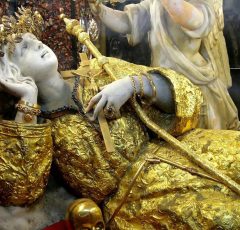
Take a special excursion to discover Palermo’s natural side. Drive up to Monte Pellegrino for stunning views of the city and Mediterranean scenery. Visit the shrine of Santa Rosalia, patron saint of Palermo, built over her grotto. Continue down the mountain to a belvedere for panoramic views of Conca d’Oro and Favorita park. End the trip in Mondello, a seaside resort known for its white sandy beach, liberty-style bathing establishment, and delicious Palermitan ice cream.
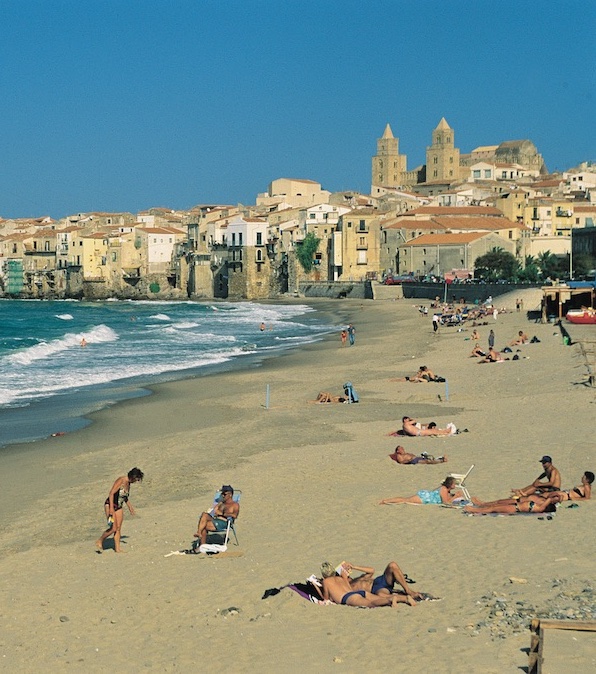
Cefalù is a beautiful medieval town on the northern coast of Sicily. It has a long sandy beach that is great for children and plenty of restaurants, cafes and shops to explore. The town is situated on the site of an ancient Greek settlement with megalithic boundaries and an old inhabited area visible in the nearby mountains. The Cathedral, built in southern Romanesque style by King Roger II, is the most important monument and features stunning golden mosaics. The Mandralisca museum also contains a picture gallery with notable works by Antonello da Messina and an archaeological and numismatic collection.

Cefalù is a medieval town on the northern coast of Sicily with an ancient Greek settlement. It has a picturesque mountain with megalithic boundaries and plenty of delightful restaurants and shops. The town also has a long sandy beach that is perfect for children. The main monument is the Cathedral, with stunning golden mosaics, built by King Roger II in southern Romanesque style. There are other places to visit like the medieval washing place, the ancient Osterio magno palace, and the Mandralisca museum, which includes a picture gallery with a fine painting by Antonello da Messina. The museum also has an archaeological and a numismatic collection.
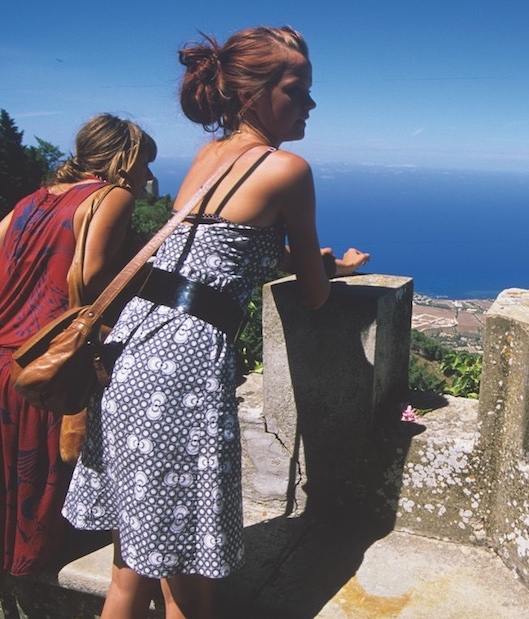
Visit Trapani, a quaint town on the westernmost tip of Sicily with a rich history and restored old center. Explore the Annunziata sanctuary and adjoining Carmelite convent, now the Pepoli museum with a collection of art and history. Head to the walled town of Erice for a dose of medieval charm with its stone houses and religious buildings like the Cathedral and San Giuliano and Madonna della neve churches. Admire the views from the public Baglio Gardens and nearby Norman castle. And, don’t forget to buy almond confectionery from local pastry shops.

Trapani, a charming town in Sicily, offers rich art and culture treasures showcasing its ancient history. The restored old center is best explored on foot. Discover Annunziata Sanctuary, Trapani’s most important monumentl remaining its original Gothic facade, and the transformed Carmelite convent that houses the Pepoli Museum. The museum displays several works of art, including an impressive collection of silver and coral objects. The guided tour then moves to the salt pans, a WWF oasis, where thousands of birds migrate in spring and autumn. Learn about the age-old salt production tradition at the Salt Museum, inside an old windmill. Enjoy a stroll among the basins while taking in the unique and enchanting scenery perfect for photo opportunities.

Favara, a small Arab village, is located just 10 minutes from the Valley of Temples. Its historic center features ancient buildings, like the Chiaramonte Castle and Rosario Church, and picturesque narrow streets and alleys. One of the old districts has been restored and transformed into the Farm Cultural Park, showcasing contemporary architecture and art.

Segesta is an archaeological site in Sicily with a temple and a theatre. The almost perfect state of the Doric temple, built in 430 BC, makes it a significant surviving Hellenistic temple. The theatre, 1km away, is still used for performances during the summer with a stunning view of the sea. Next stop is Erice, a medieval village on top of a mountain with stone houses, religious buildings, and the nearby Norman-built castle above the temple of Venus. Enjoy the panoramic views from the belvedere and buy some almond confectionery from local pastry shops.
EXCURSIONS IN EASTERN SICILY

Catania is a lively city on the Jonian coast that has much to offer including baroque architecture, a grand cathedral, and a magnificent fish market. The tour continues along the picturesque Ciclopi Riviera towards Acireale, where you can enjoy beautiful Baroque architecture and a delicious Sicilian ice cream overlooking the sea.

Caltagirone is a UNESCO Site with a rich history in ceramics and folklore events. Named from the Arab term Qalaterun meaning “Castle of the burial grounds,” the town was destroyed by earthquakes but rebuilt in baroque style in the 18th century. Noteworthy monuments include the Norman Cathedral, Chiesa del Collegio, and Chiesa di S. Giacomo, as well as the Chiesa di S. Maria del Monte with its polychrome majolica staircase and the Regional Museum of Ceramics. Only 30 minutes away is the Villa Romana del Casale of Piazza Armerina, a UNESCO-inscribed property showcasing nearly 3500 square meters of outstanding mosaics depicting Roman life. Notable mosaics include the corridor of the great hunt, the famous girls in bikini room, and the erotic scene room.

Caltagirone is a Unesco Site with a rich heritage of ceramics tradition and folklore events. The name comes from the Arab term Qalat-Jerun as it had vast necropolises. Destroyed twice by earthquakes, it was rebuilt in baroque style. Monuments of interest include the Norman Duomo, Chiesa del Collegio, Chiesa di S. Giacomo, Corte Capitanale, Chiesa di S. Nicola and a beautiful staircase decorated with polychrome majolica. The Museo Regionale delle Ceramiche has been located here since 1965.

The Alcantara river formed the Gorges due to lava from the eruption of the Mojo crater on Etna. The river dug through the solid lava, forming two walls of basalt with prismatic shapes. The Sicilian river and valley were named after the Al Qantarah bridge built by the Romans. Visitors can see the river’s lava cavity in the summer when the water level is low. The 20-meter-deep and few meters-wide Gola has black stone walls rising opposite each other. The green water contrasts with the blue sky against the rock. The river is 52 km long, and the gorges span about 500 meters, with a 5-meter distance between the walls and have a height of 55 meters.
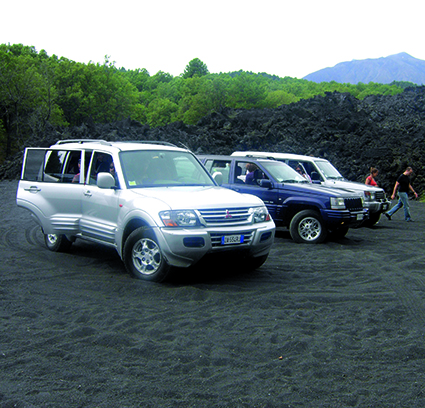
Experience the highest active volcano of Europe in a Jeep tour with an expert vulcanologist guide. Mount Etna is the highest and most active stratovolcano in the world. It is a natural laboratory for studying ecological and biological processes. The excursion ensures total safety for both participants and their vehicles. The goal is to introduce you to an area with nature, climate, and splendid landscapes that deserve to be experienced. The itinerary takes into account the culture and ethnicity of Etna’s traditions. Recommended attire includes trekking shoes, a wind-jacket, and a cap. After the tour, enjoy a wine and honey tasting and a typical Sicilian lunch in a wine cellar. The tour ends with a drive to Messina to board a cruise ship.

Explore the fascinating and impressive Taormina and Etna on this classic Sicilian tour. Drive along the winding road to Etna Sud and the Crateri Silvestri area at 1800 mt a.s.l. As you go higher, the panoramic view widens to the sea, Catania, and the woods on the slopes of the volcano. Hike or take the cable car and a 4×4 minivan up to about 3000 mts, the lunar landscape around the central crater offers an unforgettable experience and the chance to enjoy an amazing view of half of Sicily, from Siracusa in the south to Messina in the North. Next on the itinerary is Taormina, the most popular tourist resort in Sicily. It is an ancient village with beautiful old houses, narrow stone-paved streets, shops, restaurants, and cafes. The famous Greek-Roman theatre is a must-see attraction, hosting the Taormina Film Fest and other events during summer – it is considered one of the world’s most beautiful views.

Visit the highest volcano in Europe, Etna, a UNESCO World Heritage site. Drive up to 1800m, admiring the view of Catania, the sea and the woods. Hike the Crateri Silvestri or take a cable car and minivan to 3000m for a lunar landscape and a great view of Sicily. As the volcano is active, note that the excursion can be cancelled. After the tour, enjoy a wine and honey tasting and a Sicilian lunch.

We’ll visit Syracuse, one of the oldest and most powerful cities in the Mediterranean, founded by Greek settlers in the 8th century BC. Located on the island of Ortigia, the historical center boasts beautiful Greek ruins, Renaissance buildings, and Baroque churches, including the Cathedral built in the 8th century atop an Hellenistic temple. We’ll also see Santa Lucia alla Badia, which houses Caravaggio’s painting of the burial of the saint. After exploring Ortigia’s sea promenade and side streets lined with shops and cafés, we’ll head to the Archaeological Park to see the 5th-century BC Greek Theatre, used for summer performances, the ear of Dionisus, the stone quarries, the huge Ierone alter, and the Roman Amphitheatre.
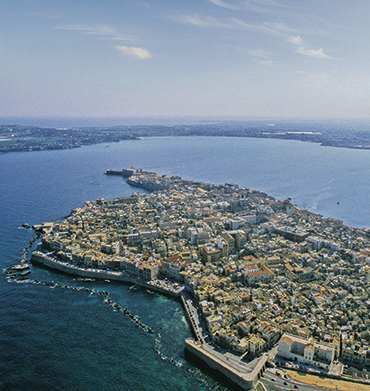
Boat trip departs from Porto Grande Syracuse at 9:30-13:30 or 14:30-18:30. See Syracuse’s coast, coves, cliffs, and the Ortygia island, including the Spanish fort and Castello Maniace. Stopovers allow swimming and admiring the seabed. Soft drinks and fruit provided, alcohol available by request when booking.

Taormina, a popular tourist center in Sicily, offers ancient architecture, shops, restaurants, and cafes. Take a walk on Corso Umberto to immerse yourself in the views while enjoying an ice cream along the way. For a more intimate experience, explore the small side streets. The Greek-Roman Theater of Taormina is the main attraction, offering one of the most beautiful panoramic views in the world. This outdoor theater overlooks the coast and Mount Etna and hosts the Taormina Film Fest in the summer. Castelmola offers a unique experience, with medieval architecture including the Piazzetta del Duomo, churches, and ruins of the Norman castle. Savor a glass of the famous “almond wine” at a local bar.

Visit Taormina, a beautiful tourist resort in Sicily with a stunning Greek-Roman Theatre and breathtaking views of the coast and Mount Etna. The town hosts the Taormina Film Fest in the summer and offers a range of events such as pop music concerts and theatre performances. Take the “Godfather” tour up in the mountains to explore real Sicilian countryside, culture and local lifestyle. The tour includes Forza d’Agrò, which features glimpses of the fictional Corleone; Savoca, a picturesque village with spots shown in the movie, including the famous Bar Vitelli; and the Castello degli Schiavi, which is famous for featuring in The Godfather I and II. Don’t miss the chance to taste the delicious lemon granita and visit the church of St. Lucy. Today the castle hosts exclusive events and dinners and is still used as a film location.

The Aeolian Islands are easy to reach by a short cruise. The seven islands are included in the World Heritage List, each differing in size and characteristics. Interesting excursions can be found on each island such as the Aeolian Museum and vantage point in Lipari, the Malvasia liquor cellars and caper farms in Salina, and the beautiful bay, Cala Junco, in Panarea. Volcano is known for its curative mud and the fumigants slopes of the volcano that gave the island its name. Stromboli is a must-visit for its still active volcano that erupts every 15-20 minutes. Lastly, each island has a rich and clean sea perfect for snorkeling.

